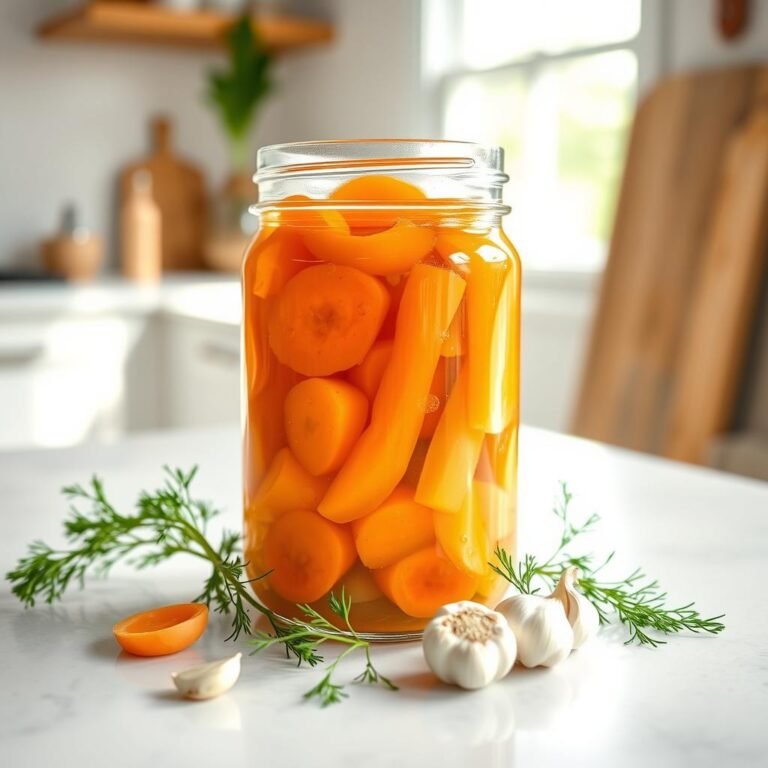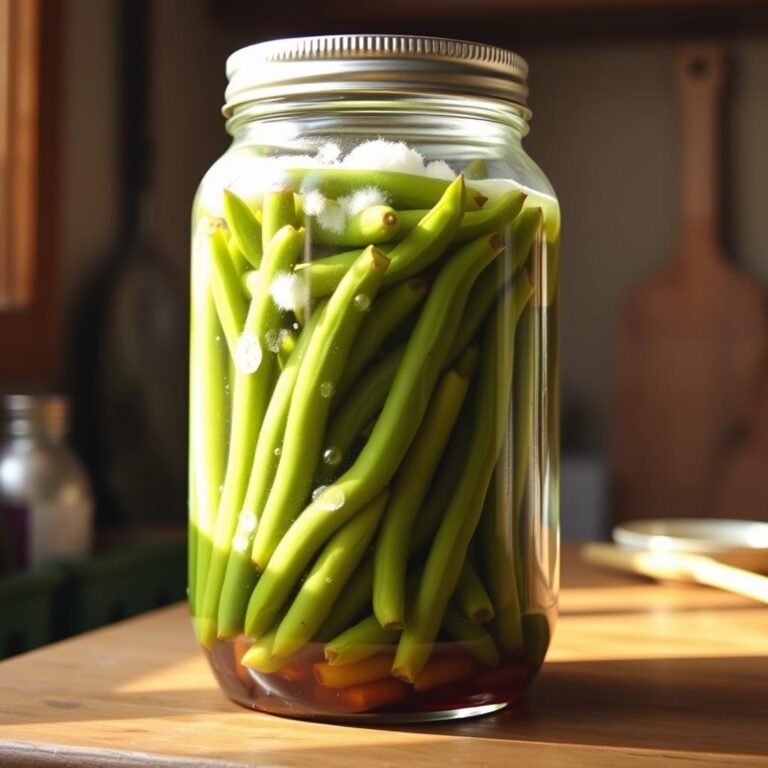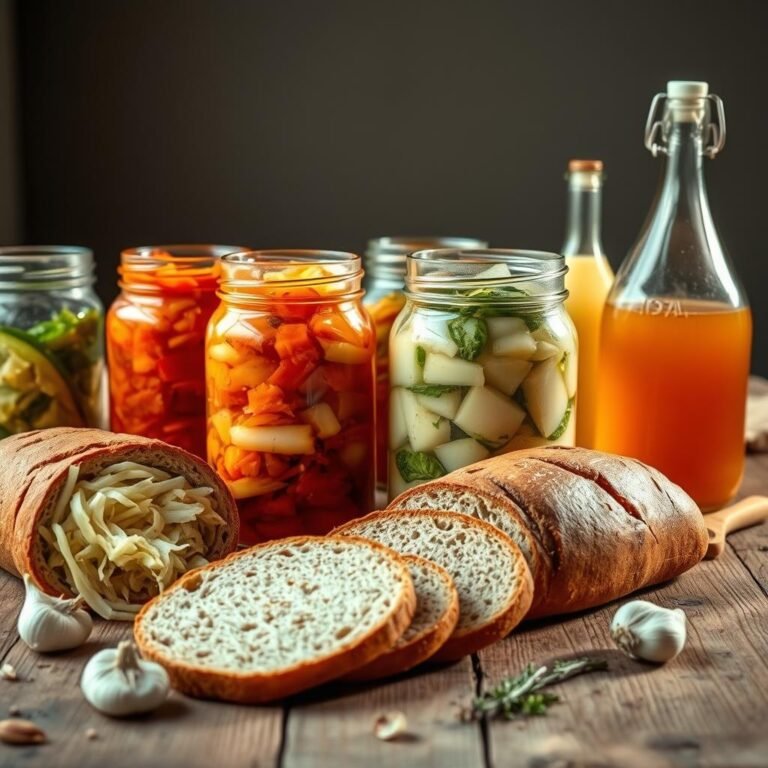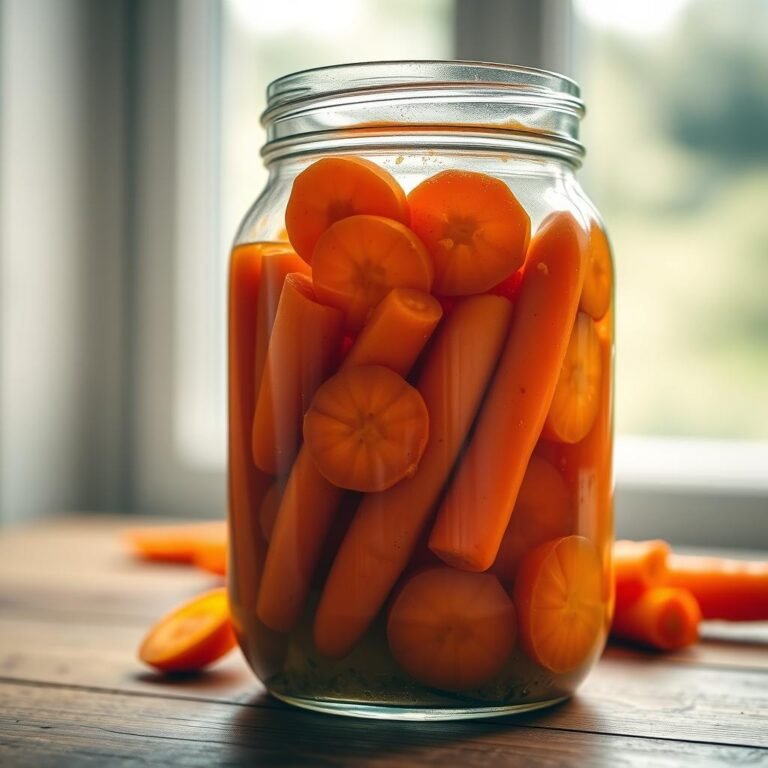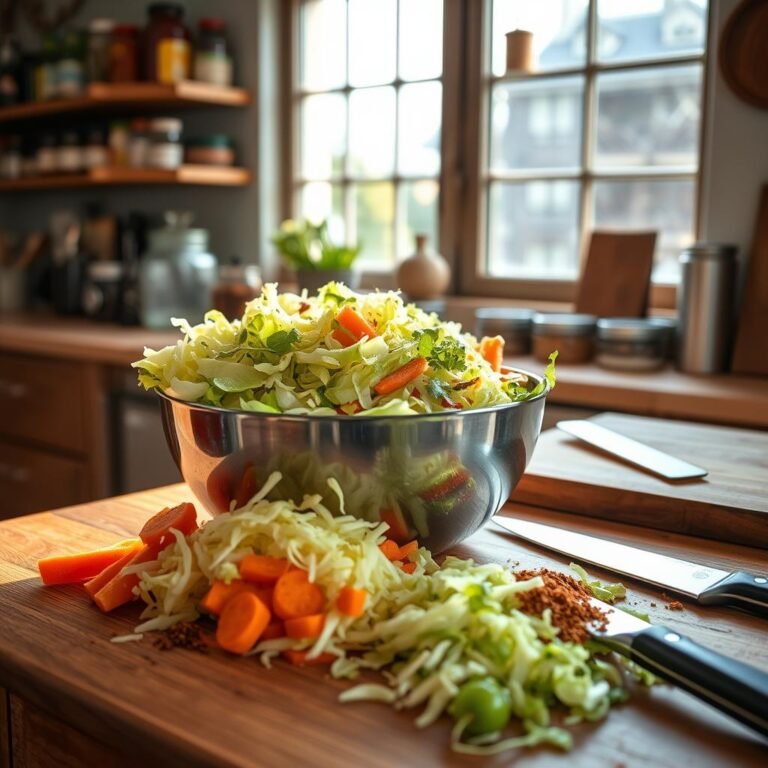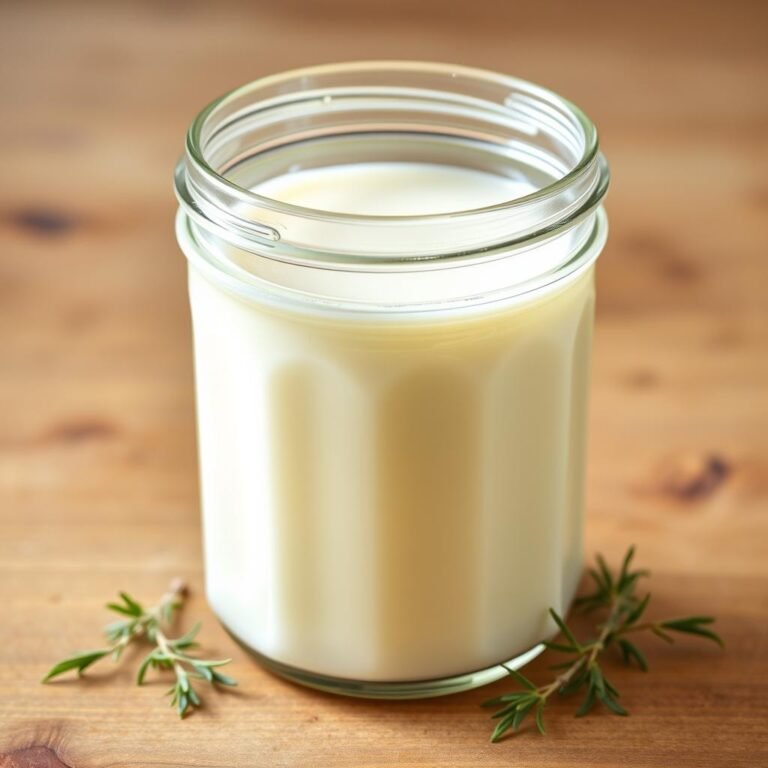Fermented Onions vs Pickled Onions: What’s the Difference?
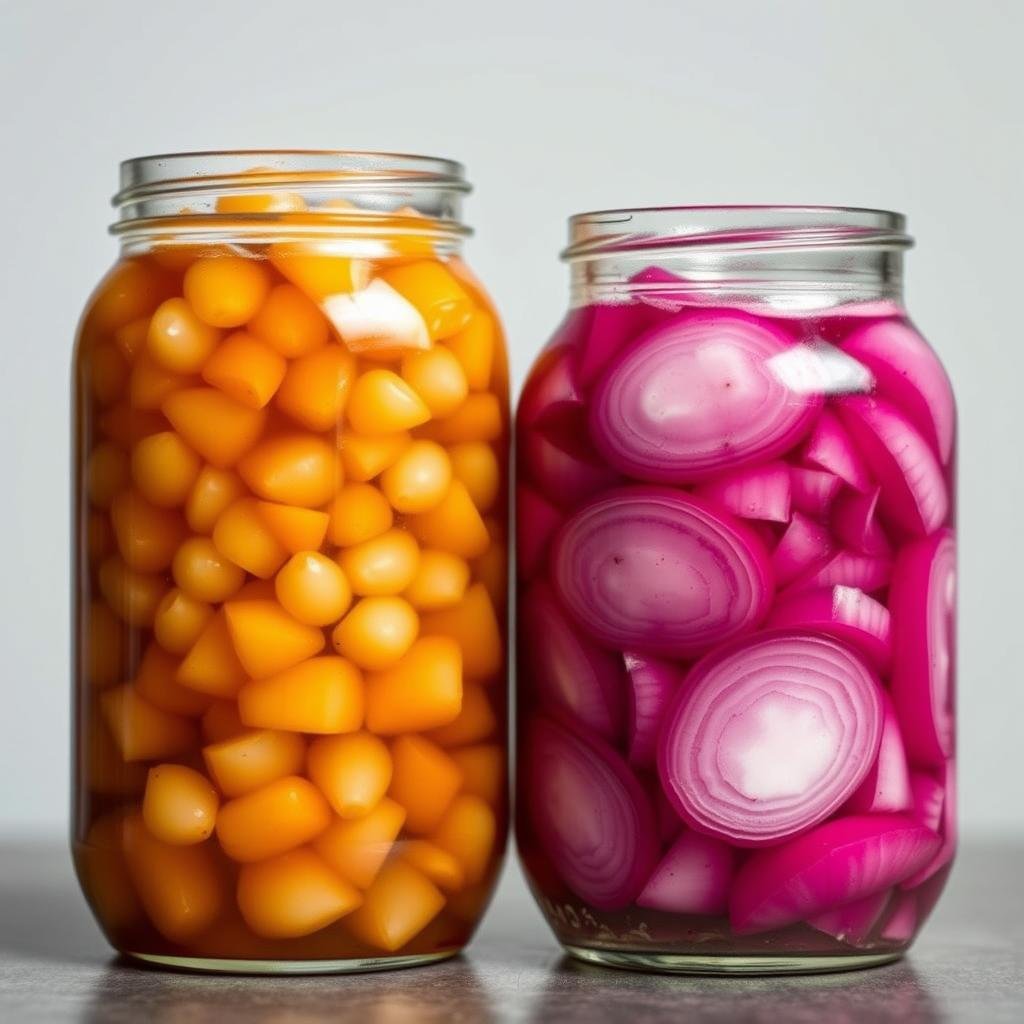
Curious about the difference between fermented onions and pickled onions? You’re in the right place. This article explores the key differences between these two ways to preserve onions. We look at how they are made, their health benefits, and how they are used in cooking.
Knowing these differences can make you a better cook. It also helps you understand how each method changes the taste and health value of onions.
Introduction to Fermented Onions and Pickled Onions
Fermented onions and pickled onions have unique tastes and health perks. Fermentation uses natural bacteria and saltwater to make onions tasty and good for your gut. This method makes onions rich in probiotics and boosts digestion.
Pickling is quicker, using vinegar, water, salt, and sugar to keep onions fresh. It gives onions a tangy flavor and keeps them crunchy. Pickling helps keep onions’ vitamins and antioxidants, adding zest to food.
These methods have been around for centuries, used before refrigerators. Now, they’re popular again for their taste and health benefits.
| Fermented Onions | Pickled Onions | |
|---|---|---|
| Preservation Method | Fermentation (Natural Bacteria & Salt Brine) | Pickling (Vinegar-Based Brine) |
| Flavor Profile | Deep, Tangy, Complex | Tangy, Slightly Sweet, Crisp |
| Duration | Several Days to Weeks | Hours to Days |
| Health Benefits | Gut Health, Enhanced Digestion | Retained Vitamins, Antioxidants |
Knowing the differences helps you pick the right method for your taste and health goals. Whether you prefer the deep flavor of fermented onions or the tangy taste of pickled onions, these methods can spice up your cooking.
What are Fermented Onions?
Fermented onions are a tasty and healthy way to keep onions fresh. They are not pickled with vinegar. Instead, they use natural bacteria to turn onions’ sugars into good acids. This process keeps the onions fresh and adds probiotics for a healthy gut.
The Fermentation Process
To make fermented onions, you need to soak them in a brine. The brine is water and salt. The onions’ natural bacteria eat the sugars, making lactic acid.
This acid keeps the onions fresh and gives them a tangy taste. To ferment onions at home, just slice them, put them in a clean jar, add brine, and wait a few days.
Health Benefits of Fermented Onions
Fermented onions are good for your gut and immune system. They have probiotics that help your body digest food better. These probiotics also make your immune system stronger.
Onions also have vitamins and minerals that are good for you. They help keep you healthy overall.
What are Pickled Onions?
Pickled onions add a tangy flavor to many dishes. They are great in sandwiches, salads, and tacos. The onions are preserved in vinegar, making them taste better and last longer.
The Pickling Process
The pickling process is simple and quick. It involves soaking sliced onions in a vinegar mix. This mix includes vinegar, sugar, salt, and spices. Here’s a basic pickled onions recipe:
- Sliced onions (red or white)
- 1 cup white or apple cider vinegar
- 1 cup water
- 2 tablespoons sugar
- 1 tablespoon salt
- Optional spices: peppercorns, bay leaves, garlic cloves, or chili flakes
Boil the mix, then pour it over sliced onions in a jar. Let it sit for at least an hour. They taste better if pickled overnight.
Pickled Onions Nutrition Facts
Knowing the pickled onions nutrition facts is key for health lovers. The vinegar and sugar add calories. But onions also have vitamins and minerals. Here’s a quick look at the nutrition in a typical serving (about 30g) of pickled onions:
| Nutrient | Amount per Serving (30g) |
|---|---|
| Calories | 20 |
| Carbohydrates | 5g |
| Sugars | 2g |
| Sodium | 200mg |
| Vitamin C | 4% DV |
The vinegar helps keep some vitamins in the onions. But, pickled onions might have more sodium than fermented ones.
Fermented Onions vs Pickled Onions
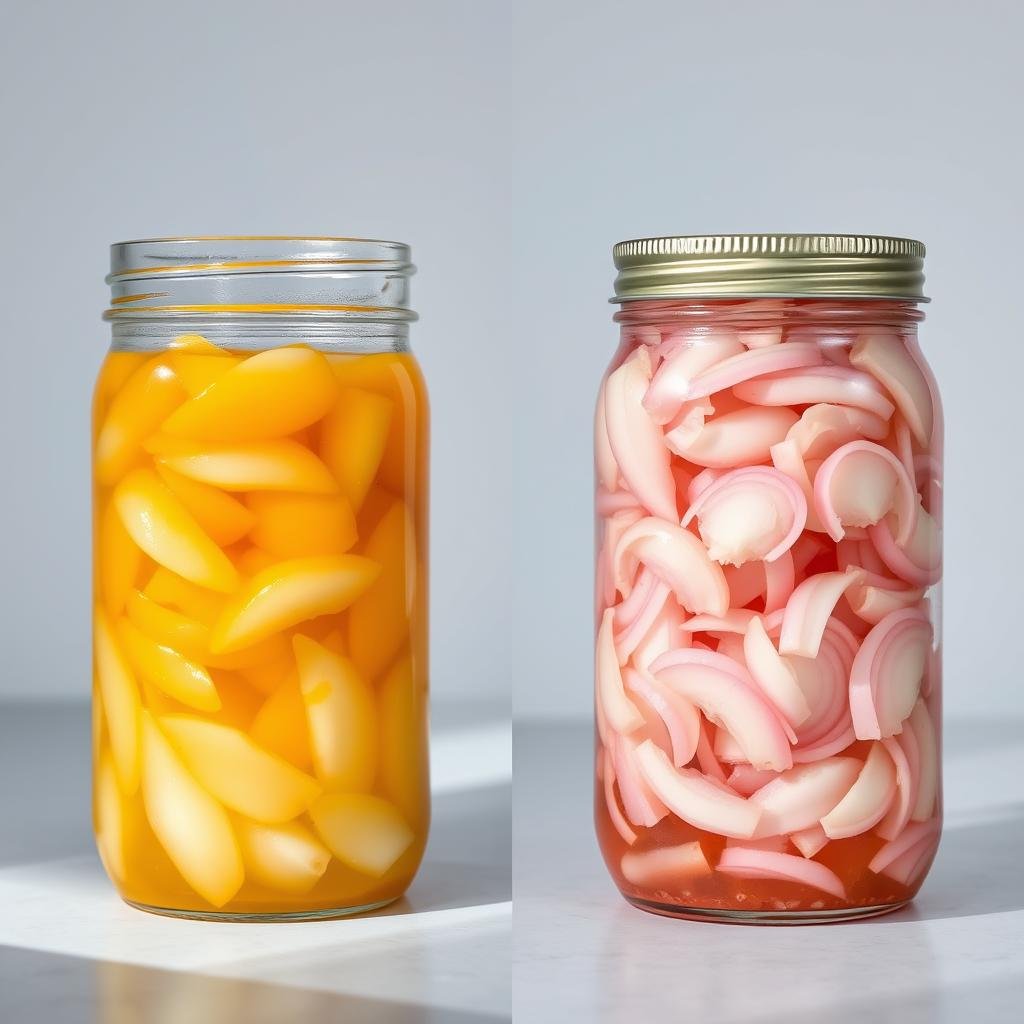
Knowing the difference between fermented and pickled onions helps us understand their unique qualities. Both have special tastes, textures, and health perks. They fit different diets and recipes well. The way they’re made is key to these differences.
Fermented onions get a boost from good bacteria during fermentation. This makes them taste tangy and have a fizzy feel. Pickled onions, on the other hand, soak in vinegar. They taste sharp and stay crunchy. This makes pickled onions easy to eat quickly.
The difference between fermented and pickled onions also shows in their nutrition. Fermentation adds probiotics, which are good for your gut. Pickled onions, though low in calories, might have added sugars and salts. This is bad for those watching their sodium.
When choosing fermented onions vs pickled onions for cooking, think about taste and health. Fermented onions add deep flavors and probiotics to dishes. Pickled onions add a crunchy, sharp taste to salads, sandwiches, and tacos.
In short, picking between fermented and pickled onions depends on what you like and need. They both add flavor and nutrition to our meals in different ways.
Flavor Differences Between Pickled and Fermented Onions
Fermented onions and pickled onions taste different because of how they’re made. Fermented onions get their rich, umami flavor from tiny living things. This makes them taste complex and a bit sour.
Pickled onions, on the other hand, taste sharp and tangy. This comes from the acidic brine they soak in. They are bright and zesty.
Fermented onions are softer, while pickled onions are crunchier. This texture difference affects how they’re used in cooking. Fermented onions are great for rich, savory dishes. Pickled onions are better for lighter, fresher dishes.
Both methods make onions taste saltier and sourer. But fermented onions have a special umami flavor. This can make a dish taste better than pickled onions can.
To learn more, check out this resource on pickling vs fermenting.
Exploring fermented and pickled onions shows their unique benefits. Fermented onions are perfect for hearty dishes because of their umami and soft texture. Pickled onions add flavor and color to salads and sandwiches with their tangy taste and bright look.
How to Ferment Onions at Home
Fermenting onions at home is a fun way to make them taste better and be healthier. This guide is for both newbies and seasoned fermenters. You’ll learn how to ferment onions at home and enjoy their many benefits.
Ingredients and Supplies Needed
To start, you need some basic things and special tools:
- 1 medium to large red onion
- 2 tsp sea salt
- 1 cup non-chlorinated water
- Quart Mason Jar or Weck Jar
- Wide-mouth leak-proof mason jar lids
- Fermentation weight
- Fermentation lid
Step-by-step Fermentation Recipe
Here’s how to make fermented onions:
- Peel and slice the red onion into thin rings.
- In a bowl, mix 2 tsp of sea salt with 1 cup of non-chlorinated water to make the brine.
- Pack the onion slices into the Mason jar, leaving about an inch of space at the top.
- Pour the brine over the onions, making sure they’re fully covered. Use a fermentation weight to keep them under the brine.
- Put the lid on the jar. Make sure it’s leak-proof. Add the fermentation lid on top.
- Keep the jar at a temperature between 70-80 degrees Fahrenheit.
- Check the onions every day. You’ll see bubbles and cloudiness in 2-4 days, which means fermentation is happening. Let it go for up to a week.
Try adding spices like peppercorns, garlic, or bay leaves to the brine for extra taste. For more tips, visit Fermentation Adventure.
Pickled Onions Recipe
Pickled onions are known for their tangy, sweet taste. They add a special kick to many dishes. Making pickled onions at home can turn simple meals into fancy ones. Let’s explore the ingredients and steps to make your own pickled onions.
Ingredients Required for Pickling
- 2 cups sliced red onions
- 1 cup white vinegar
- 1 cup water
- 3 tablespoons granulated sugar
- 2 tablespoons kosher salt
- 1 teaspoon black peppercorns
- 1 clove garlic, smashed
Instructions to Prepare Pickled Onions
- In a clean jar, place the sliced red onions.
- In a saucepan, mix the white vinegar, water, sugar, kosher salt, black peppercorns, and smashed garlic. Heat it until the sugar and salt melt.
- Pour the hot liquid over the onions in the jar, making sure they’re covered.
- Let it cool down to room temperature. Then, seal the jar with a lid.
- Put the pickled onions in the fridge for at least 24 hours. This lets the flavors get better.
This easy recipe for pickled onions gives you crunchy, tasty onions. They’re great for tacos or salads. Learning to make pickled onions opens up new flavors for your meals. Enjoy the lively taste they add to your dishes!
Health Benefits: Fermented Onions vs Pickled Onions
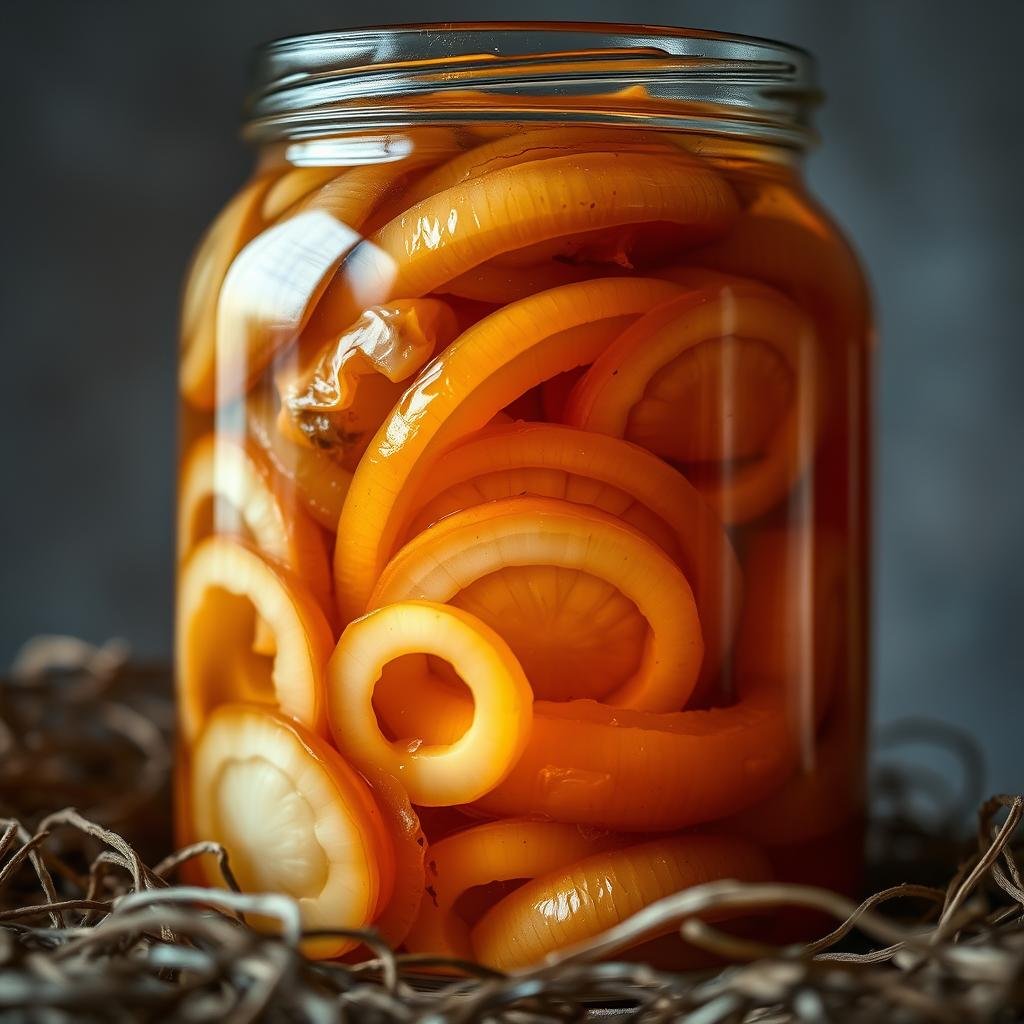
When we look at fermented onions health benefits and pickled onions, we see big differences. Fermented onions are full of probiotics, which help our gut health. They aid digestion, boost our immune system, and might even help our mental health. But, it’s key to make sure the fermented onions have live cultures. Heat can kill these good guys.
Pickled onions, on the other hand, are made with vinegar or brine. They don’t have the probiotic boost of fermented onions. Yet, they are packed with vitamins, minerals, and antioxidants. They are rich in vitamin C and have dietary fiber, which is good for us.
Fermented onions are easier to digest because of the fermentation process. This process breaks down complex molecules, making nutrients easier for our bodies to use. This means we get more vitamins and minerals from fermented onions. Pickled onions, while nutritious, don’t offer the same level of nutrient absorption.
The way onions are preserved affects their health benefits. Fermentation makes onions more nutritious by making vitamins and minerals more available. Pickling, on the other hand, preserves the onions quickly but doesn’t improve their nutritional value.
To sum up, here’s a quick look at the health benefits of fermented and pickled onions:
| Factor | Fermented Onions | Pickled Onions |
|---|---|---|
| Probiotics | Yes | No |
| Ease of Digestion | High | Medium |
| Vitamin and Mineral Bioavailability | Enhanced | Standard |
| Overall Nutritional Profile | Improved by Fermentation | Maintained by Preservation |
In the end, both fermented and pickled onions have great benefits. Your choice depends on your health goals and what you like to eat.
Pickled vs Fermented Vegetables: Broader Comparison
The debate on pickled vs fermented vegetables focuses on health benefits, taste, and cooking uses. Both methods have been used for centuries, each with its own perks.
Pickled vegetables soak in vinegar or acidic liquids. This method, used by the Romans, makes food tangy and crisp. Examples include pickled cucumbers and onions. Pickling stops bacteria growth but might lose some nutrients.
Fermented vegetables use bacteria to turn sugars into acids. This keeps nutrients and boosts probiotics. Fermentation has been around for 10,000 years, with foods like kimchi and yogurt.
Fermented onions are great for gut health because of probiotics. Fermented foods usually have more health benefits than pickled ones.
Now, let’s look at the nutritional differences:
| Aspect | Pickled Vegetables | Fermented Vegetables |
|---|---|---|
| Preservation Method | Acidic solutions like vinegar | Natural bacterial fermentation |
| Flavor Profile | Tangy and crisp | Sour and complex |
| Nutritional Value | May lose some nutrients | Often enhanced with probiotics |
| Culinary Uses | Sandwiches, salads, and snacks | Rice bowls, soups, and health drinks |
In summary, pickled and fermented veggies cater to different tastes and health needs. Whether you prefer tangy pickled veggies or the fermented onions benefits, both add value to your diet.
Storage and Shelf-life: Fermented and Pickled Onions
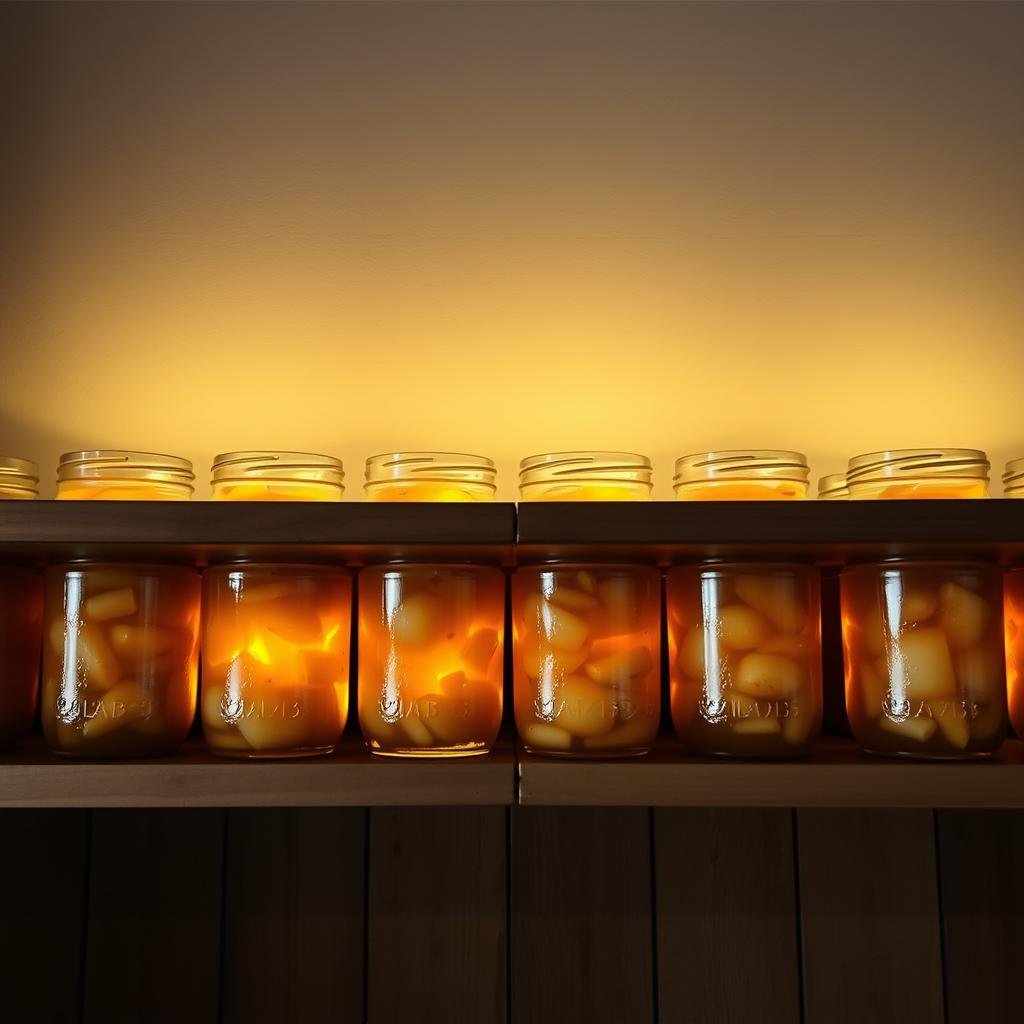
For fermented onions, keep them cool and dark. The best temperature is between 32°F and 45°F. This keeps their probiotics and flavor good for up to six months.
Pickled onions’ shelf life depends on the vinegar and salt solution. If refrigerated at 40°F, they can last three months. Make sure the jar is tightly sealed to avoid contamination.
It’s important to check your jars often. This ensures both types of onions are safe to eat. Look out for these signs of spoilage:
- Off-putting odor
- Mold growth
- Bubbly or slimy liquid
By following these tips, you can keep your onions fresh and tasty. This way, they’ll stay good for a long time.
Culinary Uses for Fermented and Pickled Onions
Fermented and pickled onions can make any dish better. They add a tangy taste and depth to food. Try adding them to salads for a probiotic boost and a rich flavor.
They also go well with roasted vegetables or in rice dishes. This makes the taste and nutrition better.
Pickled onions are great as garnishes for tacos, burgers, and sandwiches. They add a sharp, tangy flavor. You can also chop them finely for slaws or as a topping for avocado toast.
For a simple appetizer, pair them with cheeses and charcuterie. Both fermented and pickled onions bring flavor and health benefits to your cooking. Use them in sauces, dressings, and marinades to find new flavors.
They can make your favorite dishes better or inspire new ones. The uses of fermented and pickled onions in cooking are endless.
